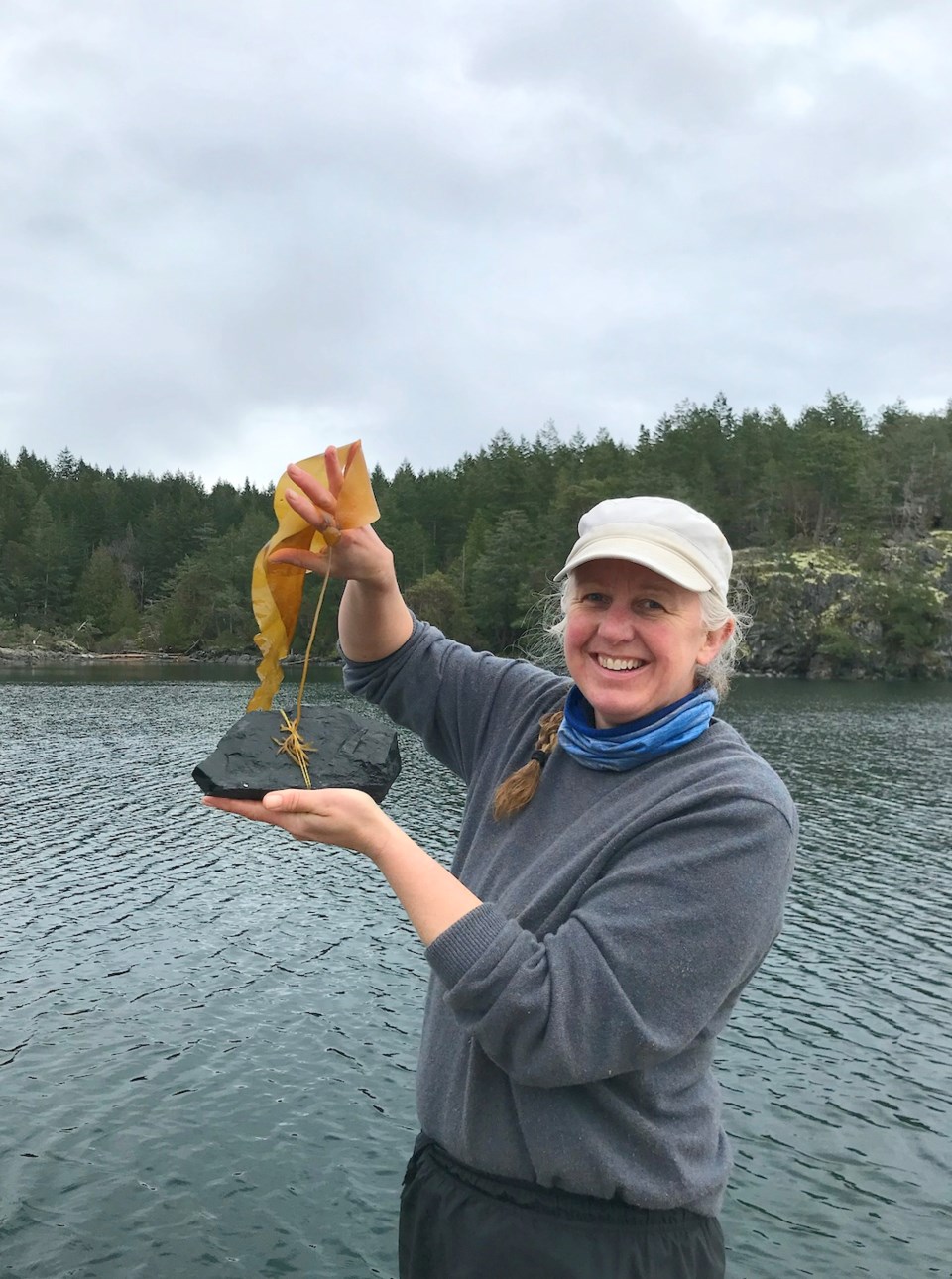This article is from the spring 2024 edition of Coast Life magazine.
Lee-Ann Ennis has always had her hands in water. Always with a microscope nearby. She studied Biology at the University of Victoria, and Bamfield Marine Station before her storied teaching career as a naturalist and interpreter with the Vancouver Aquarium, BC Parks, and here on the Sunshine Coast.
Years ago, Lee-Ann was involved with the Herring Curtain Project, using landscape fabric and repurposed netting in lieu of missing kelp habitat on the Sunshine Coast. Herring larvae, spawned directly on toxic creosote pilings, would often not survive. The curtains were a stop gap measure. The herring needed a kelp nursery to lay their eggs and provide protection from predators. The solution was obvious: We need more kelp.
Lee-Ann investigated the decline of kelp forests along the Coast. She recalls how magnificent the kelp at Egmont was when she first arrived on the Coast in the late ’90s. Her husband, Scott, kayaked through kelp so dense, he could scarcely move his paddle. Now it’s almost all gone. Biologists use the term “blinked out,” a rapid die-off or extinction event, where a species is there one moment, gone out of thought and memory the next.
So what happened to all the kelp? A question with a complex answer, though climate change is at its heart. Starting in 2013, a series of marine heatwaves hit the Georgia Strait, and contributed to seastar wasting disease. Sunstars, an enormous (up to 11lbs), multi-limbed variant of seastar, were effectively wiped out in our local waters. Sunstars hunt sea urchins, which graze on kelp. Urchins live many years, some believe as long as a century. Sea urchins can survive in a dormant state, until conditions become more favourable. Without sunstars to keep their numbers in check, the urchin population exploded. Like a plague of locusts, the urchins stripped the kelp from the rocks, and the species who depended on the kelp suffered.
Lee-Ann is part of a global effort to restore vital kelp habitat. She teaches and assists groups in setting up kelp seed nurseries in Vancouver and as far away as the UK.
She follows protocols and techniques to collect material from three species of wild kelp with the help of divers, and uses this material to cultivate microscopic seedlings in her lab over the fall and winter. The sporophytes are seeded onto spools of twine, clay tiles and small pieces of gravel that are planted at an aquaculture lease off Nelson Island, as well as other restoration sites. Lines suspended off the ocean floor keep the kelp away from the hungry mouths of sea urchins.
Once the seeded line is in place, the kelp grows quickly, and tiny tubesnout fish (an important food for larger fish and other aquatic species) are eager to lay millions of eggs in the developing substrate. Once the tubesnout eggs have hatched, Lee-Ann and her team can safely detach the kelp from the line and, using degradable rubber bands, attach each kelp stalk to a rock, where the plant’s holdfast will take over after a couple of weeks. Now the kelp rocks are ready to be planted.
The next question is —where do you want your forest?
“Put it on the corners,” says Diane Bullpit, retired shíshálh Nation fisheries technician, and Lee-Ann’s friend and colleague. As salmonids leave their native streams and head out into the wide open Pacific, they turn at the corners of the geographic headland, as the current takes them. It is there that dense kelp habitat makes the difference between success and failure for a young salmon, providing food and protection from predators. “To a fish, kelp means survival. It is analogous to ‘home’,” says Lee-Ann.
When asked why kelp, Lee-Ann thinks of her children. She raised two daughters here on the Coast, and hopes the vast underwater kelp forests and the fish who rely on them will be more than a memory or a story for them and their children. More kelp means more fish, and more young people returning to our community. Lee-Ann says we need to, “learn from our elders to preserve the memories of the kelp forest, and bring it back to what it was, and what it can be again.”
You can follow Lee-Ann’s kelp restoration efforts on Instagram @vitalkelp




,-copy.jpeg;w=80;h=120;mode=crop)